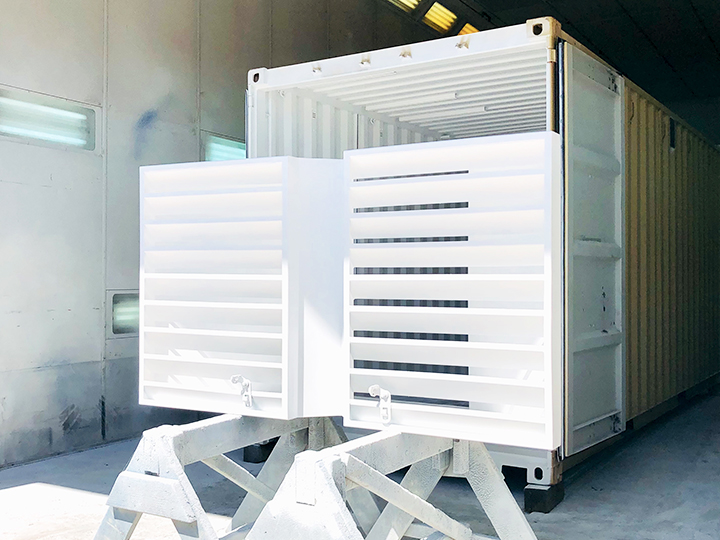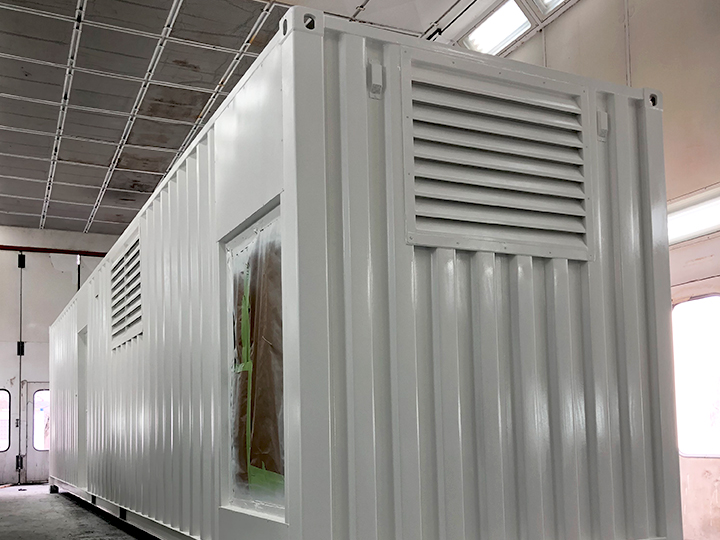Refurbishing Power Pack Reefer Generators: How to Save Money and Time
In the world of refrigerated transport and cold-chain logistics, power pack reefer generators are vital. They ensure the integrity of the cold chain, protecting perishable goods and refrigerated freight during transit.
However, these refrigerated generators require regular maintenance. Without it, their efficiency can drop, leading to costly breakdowns and cargo spoilage.
This article will guide you through the best practices for maintaining and refurbishing your power pack reefer generators. It aims to help you extend their lifespan, reduce downtime, and save money on repairs and replacements.
Stay tuned to learn how to keep your refrigerated transport running smoothly and efficiently.

Understanding Power Pack Reefer Generators
Power pack reefer generators play a crucial role in refrigerated transport. They provide the energy needed to maintain the temperature inside refrigerated containers.
These power pack generators are designed to withstand harsh conditions. They are robust, reliable, and built to last. However, like any mechanical equipment, they require regular care to perform at their best.
Understanding how these generators work is the first step towards effective maintenance. They operate on a simple principle: converting fuel into electricity to power the refrigeration unit.
Key components of a power pack reefer generator include:
- The engine
- The alternator
- The fuel system
- The cooling system
- The control panel
Knowing these components and their functions can help you identify potential issues early. This knowledge is essential for effective maintenance and refurbishment.
The Importance of Regular Maintenance
Regular maintenance of power pack reefer generators is vital. It ensures the reliability and efficiency of refrigerated transport.
Without proper care, these generators can break down. This can lead to costly repairs and downtime. Worse, it can compromise the integrity of the cold chain, leading to spoilage of perishable goods.
Regular maintenance can prevent these issues. It can extend the lifespan of your generators, reduce downtime, and save money on repairs and replacements.
Here are some key benefits of regular maintenance:
- Ensures the efficiency and reliability of refrigerated transport
- Prevents costly breakdowns and cargo spoilage
- Extends the lifespan of the generator
- Saves money on repairs and replacements
In short, regular maintenance is an investment. It pays off in the long run by ensuring the smooth operation of your refrigerated transport.

Step-by-Step Maintenance Guide
Maintaining your power pack reefer generator doesn’t have to be a daunting task. With a systematic approach, you can ensure its optimal performance.
First, create a maintenance schedule. This should include daily, weekly, monthly, and annual checks.
Here are some key steps to include in your maintenance routine:
- Check the fuel level and refill if necessary.
- Inspect the generator for any visible damage or leaks.
- Clean the generator and its components to remove dust and debris.
- Check the battery and replace it if it’s not holding a charge.
- Inspect the insulation and airflow system for any issues.
- Check the refrigerant level and refill if necessary.
- Inspect the electrical connections and tighten any loose ones.
- Perform a load test to ensure the generator is working efficiently.
Remember, safety first. Always turn off the generator and disconnect it from the power source before performing any maintenance tasks.
Also, keep a record of all maintenance activities. This can help you identify recurring issues and plan for future maintenance.
Lastly, don’t hesitate to call in a professional if you encounter any issues beyond your expertise. Regular maintenance can go a long way in ensuring the longevity and efficiency of your power pack reefer generator.
Identifying Common Issues and Troubleshooting
Power pack reefer generators, like any mechanical equipment, can develop issues over time. Being able to identify these issues early can save you time and money.
Here are some common issues you might encounter:
- The generator doesn’t start: This could be due to a dead battery, a faulty starter motor, or a problem with the fuel system.
- The generator is overheating: This could be due to a lack of coolant, a blocked radiator, or a faulty thermostat.
- The generator is making unusual noises: This could indicate a problem with the engine, such as worn-out bearings or a damaged piston.
- The generator is using too much fuel: This could be due to a dirty air filter, a problem with the fuel injection system, or a lack of regular maintenance.
If you encounter any of these issues, start by checking the most common causes. For example, if the generator doesn’t start, check the battery and the fuel system first.
However, if you can’t identify or fix the issue, it’s best to call in a professional. Trying to fix a complex issue without the right skills or tools can cause more harm than good.

When to Refurbish Your Reefer Generator
Knowing when to refurbish your reefer generator is crucial. It can help you avoid costly breakdowns and extend the lifespan of your equipment.
One sign that your generator may need refurbishing is frequent breakdowns. If you’re constantly having to repair your generator, it might be more cost-effective to refurbish it.
Another sign is decreased performance. If your generator is using more fuel than usual or struggling to maintain the right temperature, it might be time for a refurbishment.
Remember, regular maintenance can help you spot these signs early. It’s always better to refurbish your generator before it breaks down completely.
The Refurbishment Process: Saving Money and Extending Lifespan
Refurbishing your power pack reefer generator can save you money in the long run. It can also extend the lifespan of your equipment, reducing the need for costly replacements.
The refurbishment process involves several steps. These include inspecting the generator, replacing worn-out parts, and testing the equipment to ensure it’s working properly.
Here are the key steps in the refurbishment process:
- Inspection: The generator is thoroughly inspected for any signs of wear and tear.
- Replacement of Parts: Any worn-out or damaged parts are replaced with new ones.
- Testing: The refurbished generator is tested to ensure it’s working properly.
Our Process:
- Complete removal of all interior components including end frame
- Container: New container was provided and fabricated to Power Pool Plus design specifications
- Engine: Overhauled in our shop with all new wear parts, cleaned and tested
- Radiator: Re-cored to provide better efficiency and cooling
- Re-coring is the process of re-fitting the inside coils with new components
- Radiators are a key component in Power Pack operation. Whenever possible Power Pool Plus will resource the best possible solution to ensure proper cooling capabilities that exceed customer requirements.
- Generator: Re-built and baked with new tropical coatings to protect the windings from excessive moisture
- Fuel Tank: Inspected for damage. Optional service, if necessary, to cut open for interior mechanical cleaning in the event of an excessive algae build-up scenario.
- Lighting: Increased number of fixtures and upgraded all lighting to high intensity, LED lamps. A critical feature to those that will be servicing the unit.
- End Frame: In this scenario we were able to save the end frame and integrated receptacle panel from the original unit for re-use. This helped us to save the customer $1000′s in replacement costs.
- Improvements: During this process we were also able to recommend to the customer specific areas where Power Pack performance could be enhanced.
- In this case, the original unit provided insufficient air flow for proper cooling and engine operation. The original container was entirely closed providing no access to service large components; such as, radiator, silencer, engine, or generator, without compromising the box through cutting, re-welding, and painting.
- Customer agreed to have us incorporate additional rain proof exhaust louvers and access doors per current Power Pool Plus design. This ensured easy accessibility for maintenance which will extend the service life of the machine.
- Cosmetic Improvement: Freshly painted both inside and out. It’s not just about looking good.
- Having a clean, freshly painted Power pack not only looks nice, but it ensures a solid base protection from the elements by mitigating the negative effects of rust and corrosion. o Interior painting provides extra bright visibility inside the machine which not only aids in maintenance service, but also helps to visually identify potential leaks
Conclusion: The Benefits of Maintaining and Refurbishing Your Power Pack
Regular maintenance and timely refurbishment of your power pack reefer generator are crucial. They ensure the efficiency, longevity, and reliability of your refrigerated transport.
In the end, these practices save you money and time. They also contribute to the integrity of the cold chain, ensuring the safe transport of perishable goods.
